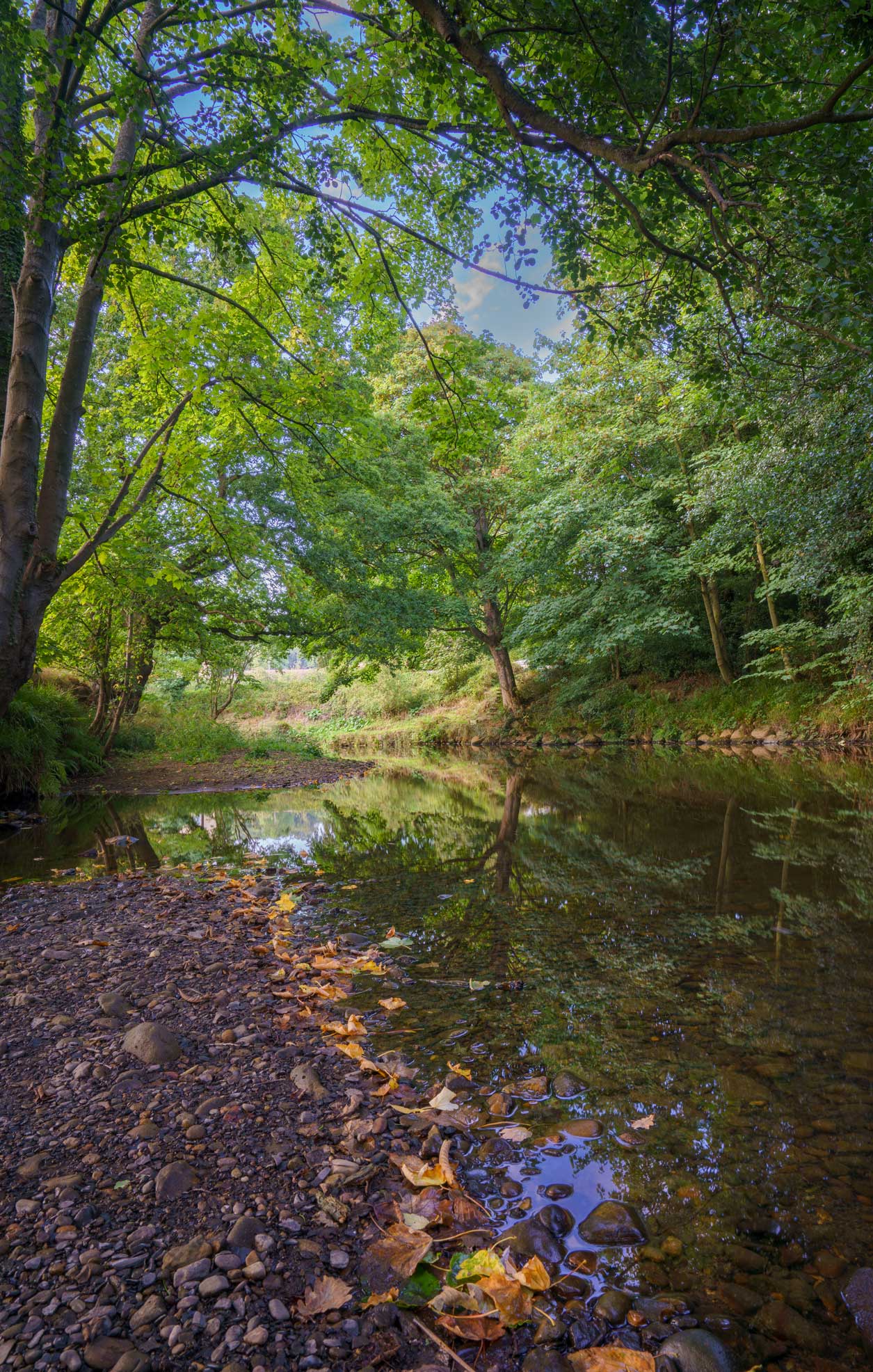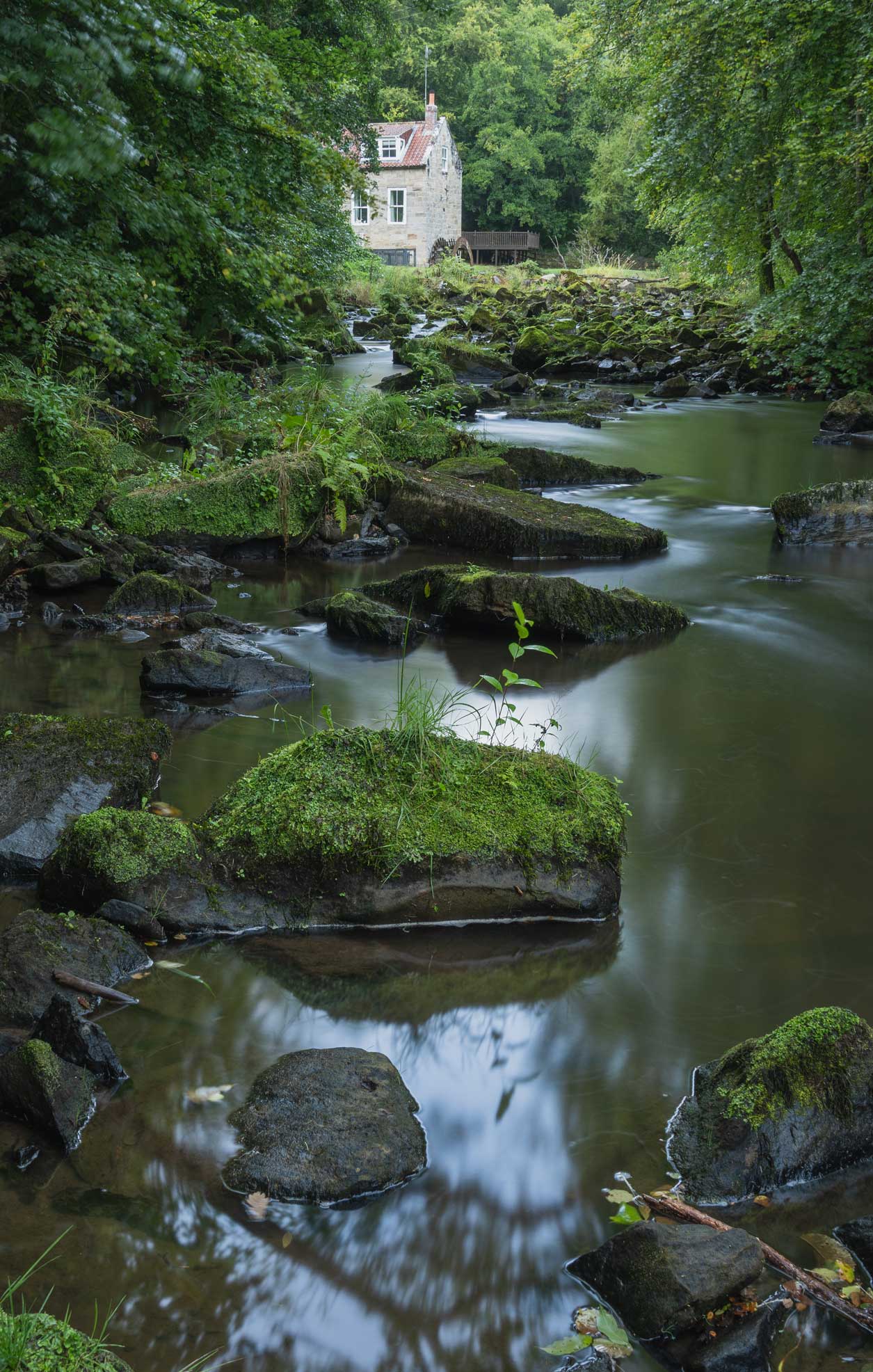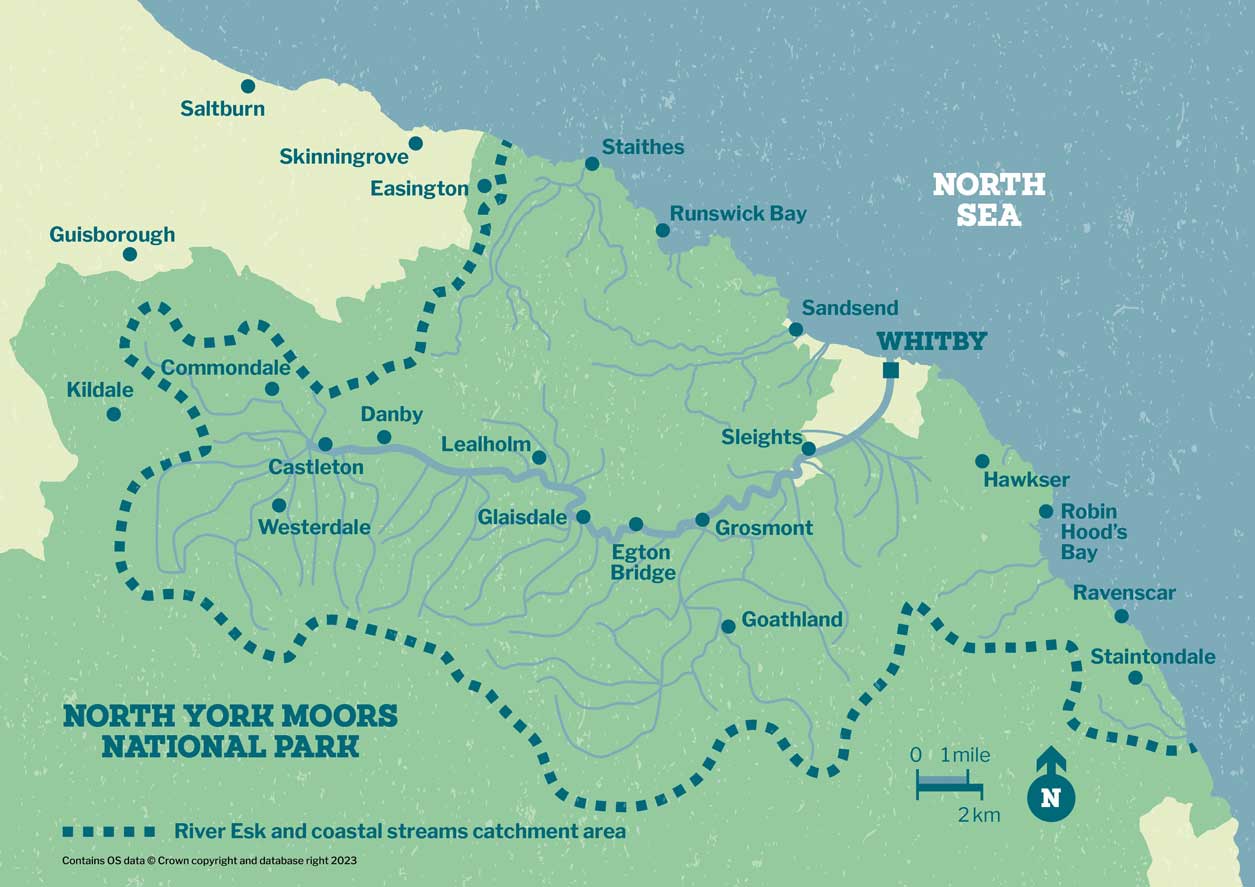From working with farmers to improve water quality, to creating and restoring habitats – we, alongside our partners, are working to deliver a variety of environmental, social and economic benefits to the Esk and coastal streams catchment.
Key aims
- Restore and protect: Work in partnership to restore habitats and champion nature recovery. To create a more naturally functioning river that supports the wider landscape and its species, including endangered freshwater pearl mussel.
- Reunite river and people: Develop people’s understanding of the river landscape, inspiring them to take ownership of the wildlife it supports. Empower people to help protect both biodiversity and climate.
- Work hand in hand: Work closely together with a number of key organisations, groups and people, combining our expertise and resources to restore the River Esk and coastal streams.


Catchment area
The River Esk emerging in the North of the National Park flows through a patchwork of heather moorland, mixed woodland and farmland before meeting the sea at Whitby estuary. The catchment also encompasses multiple coastal streams including Sandsend, Eastrow and Staithes Beck.
The Esk is North Yorkshire’s only principal Atlantic salmon river and more crucially supports a small and endangered population of freshwater pearl mussels – the last remaining in Yorkshire and a big focus for the catchment.

Explore these pages to learn more about what we’re doing and how you can get involved.
